If we assemble one or more wires side by side or make a bundle of it that is used to transfer electric current, it is called electric cable. The composition of one or more than one of these cables is known as cable assembly. We can build a cable tree or cable harness using a cable assembly that is used to connect many terminals unitedly.
The etymology of the word cable
Originally the term cable is referred to as a maritime formation of a definite length. Many ropes were combined to make a very strong and thick string of ropes that is used to hook up the larger ships. With the passage of time, like other technologies, electric technology is also developed. Initially, people used bare copper wires as the carrier of electric current. But later, people learned to construct the group the wires to get efficient performance. That grouping of wires very much resembled the traditional cable so the term cable was adopted for electrical cables.
Electric cables in the 19th and 20th centuries were normally insulated by using various kinds of cloths and papers. Nowadays we see cables are insulated using materials made of plastic. But the case of high-reliability power cables is exceptional that we see in our electric towers. With the development of electrical communication, this term is also associated with communication due to its use in this field.
Top 12 Types of cables
Different kinds of cables are used for different purposes. Based on their application cables are divided into the following kinds. We will briefly explain all the major types of cables available in the market.
1. Coaxial cable
It is normally used to carry signals of radio-frequency. A typical example of it is the cable television arrangement system. Many companies are providing television cable connections to homes. They normally use coaxial cable for this purpose.
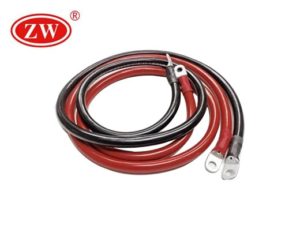
2. Direct-buried cable
DBC is a special type of cable that is used in communication or transmission. Its specifically designed structure and composition give it special characteristics. We can bury it under the ground directly. We have no need to provide extra covering or piping for its protection.
3. Flexible cables
Flexible cable is also known as chain-suitable, high-flex, and continuous flex cable. Due to issues faced in standard designs of cables a specialized, highly flexible cable was developed having unparalleled properties to make them incomparable from standard designs.
4. Filled cable
Filled cables are normally used in telecommunication. A cable that has a non-hygroscopic material filled in it is called a filled cable. This material is used to fill the blank spaces between internal parts of the cable. It prevents moisture from ingress in the cable through insignificant holes in the sheath.
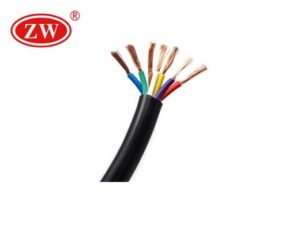
5. Non-metallic sheathed cable
In 1965 most of the domestic wiring was accomplished by using NM cables. It is also known as Romex cable. Romex is a very flexible and reliable electrical cable that consists of an outermost sheath made of plastic. It has two or more insulated conductors in it.
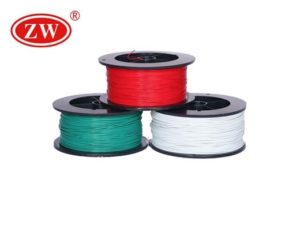
6. Metallic sheathed cable
It is also known as BX cable or armored cable (AC). The most common use of this cable is to provide the supply of electricity to very large widgets. It is also used in major junctions. It normally consists of three wires. One wire is for the flow of electric current, one acts as a ground and the other is a neutral wire.
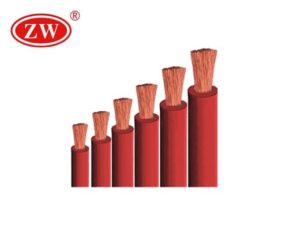
7. Multi-core cable
It is a famous type of electrical cable. It has multiple power cables encapsulated into a single jacket cable. This term is typically used for the cables having more cores than the commonly used design standards. The term core in this cable is used to express the number of useable connections that can be made by using this cable.
8. Paired cable
A Paired cable is a cable that is made up of idiosyncratic lines or channels. It is normally laid so that the twisted pairs are not organized with others to form quads. Remember, Fiber optic cables are not paired cables. It is normally used in direct-current applications. It is also a wise choice to use it in AC applications where a low frequency is required.
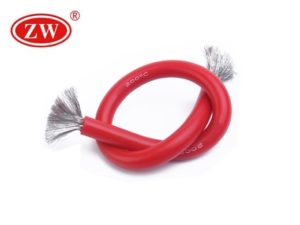
9. Portable cord
A portable cord is also called a flexible cord and extension cord. It has multiple conductors in it. It is normally used for temporary electrical power connections where flexibility is a major requirement. It can be used in motors. It is also used in small and large electrical tools and equipment. It is widely used in domestic appliances as well as in heavy machinery for power connections.
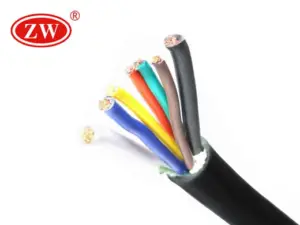
10. Ribbon cable
A ribbon cable is also called a multi-wire planar cable. It has many conductors placed parallel to one another on the same plane. This is a wide and flat cable. Its name came from the shape similarity with the piece of ribbon. It is mostly used to connect internal peripherals of the computers. In the past ribbon cables were used for external connections as well. But nowadays its use is almost finished due to the presence of round cables that replaced them completely. It is very useful for applications where many wires are required in parallel. It is specifically designed to handle the voltage of a low level.
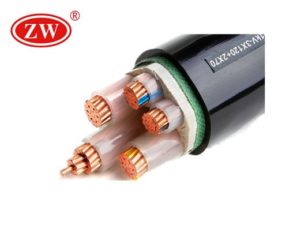
11. Shielded cable
Shielded cable is also known as screened cable. It is an electric cable that has one or more wires that are insulated tightly. Insulated wires are encapsulated in a common conductive layer. Normally this conductive layer is covered with a jacket. It is normally used for sensitive electronic circuits. It is also used in high voltage appliances to provide protection.
12. Twin-lead
It is a cable that has two wires made of copper. These two wires are at a precise distance. There is a plastic ribbon between these two wires that make it an efficient cable for the transmission line. The plastic also covers and protect the cable by insulating it.
Modern applications of cables
We use electrical cables to connect two or more electric devices. We use them to transfer electric current, signal, and power from one device to another device in our daily life. Since the invention of electricity cables are being used for a vast range of intentions. As we know special problems need special solutions. So, for specific tasks and purposes, numerous kinds of wires are developed. Nowadays we use cables in power circuits and signal circuits a lot.
If we think about the communication of long distances we get the idea of the cables that held under the sea. These are used to carry out long-distance communication. If we think about the transmission of direct current and alternating current we get the name of power cable in our mind. These are used to transmit AC and DC power.
When we enter into a big building we observe lighting, power circuits, and control circuits. It is also possible with the use of electrical cables to build wiring in the whole building. If we observe an electrical cable we can found the composition of it. It normally consists of a conductor having its own insulation. They also have assembly protection and protective coverings.
On some occasions, a more flexible electrical cable is required. It can be done easily using a systematic process. Many individual wires of small diameter are grouped or braided to build a larger wire that has better flexibility. If we use a solid wire of a definite size and then make a wire from small individual wires we can easily check that the latter one has better flexibility than the former.
If we examine a cable having copper wire we will find out that copper wire is normally bare. Sometimes the copper wire is plated with a smart layer of other metal to enhance its usability and reliability. Normally tin is used for this purpose. But other metals like gold and silver are also used for this purpose because tin, silver, and gold are reasonably retardant to oxidation as compared to copper itself. Hence, this process will increase the life of the wire and its usability and reliability will be improved. When we need lubrication between wires we use tin instead of gold and silver preferably.
Most of the flexible cables are typically used in moving applications. In this case, the use of cable trays and cable ties become crucial to keep cables safe and well organized.
In fact, cables are very specific in their usage. Certain kinds of circumstances need a certain type of cable to get the best performance, reliability, and safety.
Author
Richard Zi
Zw-cable, China
